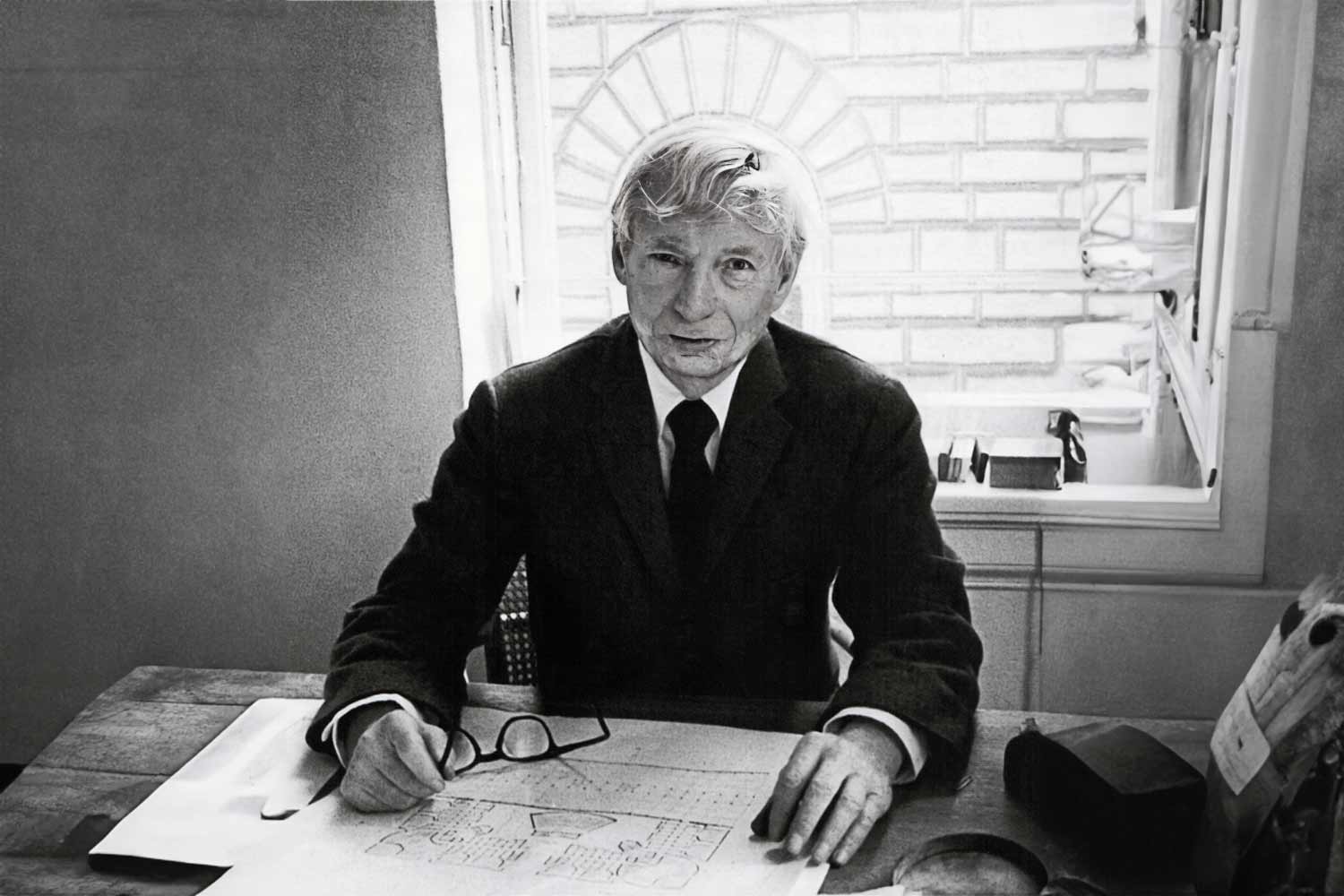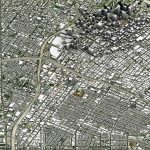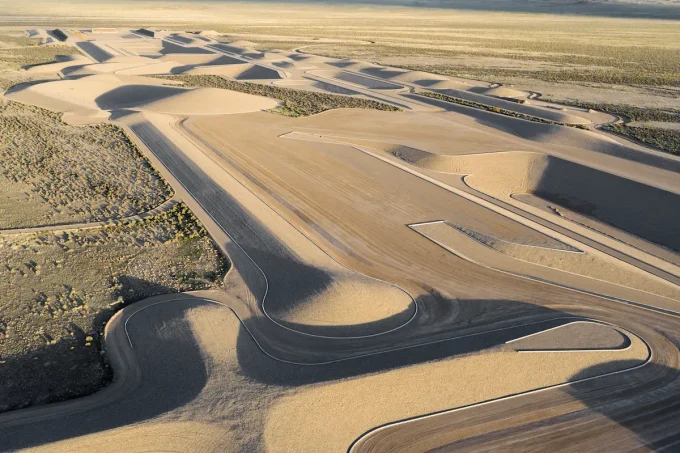Louis Kahn is recognized as one of the most celebrated and modern influential architects of the 20th century. Born in 1901, the Estonian-born American architect is based in Philadelphia. The architect was born into a humble family in tsarist Russia and emigrated to Philadelphia earlier in his life as a young boy.

The architect was affluent and interested in art and music from a young age. He was awarded a scholarship at 19 to study at the University of Pennsylvania, graduating with a Bachelor of Architecture in 1924. He worked for several architectural practices before starting his practice in 1935.

The architect was a highly respected professor, having taught at several universities, such as Yale School of Architecture, Princeton University, and the University of Pennsylvania. Over the years, architects have accomplished a style of architecture that showcases a blend of modernism and monumentalism. His architecture was also characterized by using simple materials, creating an open monumental architecture.
The First thing that an architect must do is to sense that every building you build is a world of its own and that this world of its own serves an institution.
Louis I Kahn
Listed below are 8 Exceptional architectures designed by the influential architect Louis Kahn:
Salk Institute for Biological Studies

Location: California, United States
Building Typology: Institution
Construction: 1959 -1965
The Salk Institute for Biological Studies is a research institute located in the US, recognized as one of the architectural masterpieces designed by Louis Kahn. The non-profit and independent organization founded by Jonas Salk, a polio vaccine developer, commissioned the architect to design the institute in 1959. The scenic 27-acre site located in La Jolla overlooking the Pacific Ocean was gifted by the City of San Diego (California). The architect began planning the institute in 1957 and completed the construction in 1966.
The Biological Institute, designed by Louis I Kahn in collaboration with Salk, was recognized as one of the most influential architectural masterpieces. Designed to create a collaborative research institute through building and landscape, the architect promoted interaction between scientists in space. Interaction has been developed through various scales from small porches outside laboratories to the central large plaza of the complex. The architect has created a wonderful institute that is open and unobstructed for scientists to work together seamlessly through architecture. The symmetrical layout of the institute is an architectural feature showcasing two identical concrete buildings in the layout, lined with five wings of offices separated by a courtyard.
Kimbell Art Museum

Location: Fort Worth, Texas (United States)
Building Typology: Museum
Construction: 1966 – 1972
The Kimbell Art Museum is the best example of a modern architectural marvel that showcases vaulted structure and design. The museum is unique in architecture and thought process since the architects have created architecture with light as its theme. It is in Fort Worth, housing various art collections with exhibitions and a research library. The vaulted architecture of the museum was inspired by the vaults and arches of Roman architecture.
Designed with an approach to creating architecture where natural sunlight wraps the entire museum together creating an elegant space to house the wonderful artworks. Located in Fort Worth amidst a park where the 3.8 hectares museum is situated among other prominent museums. The structure consists of parallel six vaults with narrow plexiglass skylights along the barrel vaults made up of rustic concrete. The unique architectural feature of the museum is its wing-shaped aluminium reflectors that assist in diffusing the light in the interiors with a silver gleam. The classical architectural elements were integrated into a modern interpretation with monumental arches and vaults utilizing concrete, travertine, and oak.
Indian Institute of Management

Location: Ahmedabad, India
Building Typology: Institution
Construction: 1962 – 1974
IIM Ahmedabad is one of the masterpieces designed by the master architect completed in 1974 unfortunately, the architect did not live to see it completed. The iconic brick façade institution structure consists of academic blocks, faculty offices, dormitories, library, etc. The architect showcases distinctive monumental architecture with several arches and square structures with circled carved within the form. The architect’s method of integrating modern architecture with Indian traditions was quite evident through the architecture of IIMA.
It was situated and built in an isolated rural area away from the Urbanised city of Ahmedabad, in the state of Gujarat (India). The monumental grandeur of the institution and the exposed brick surfaces are what make the architecture stand out. The climate of Ahmedabad was a factor considered in the spatial planning and layout of the school. The school has been designed and planned around a courtyard and the intense light and harsh heat of the city was reduced by the architecture. The large facades and patterns in the walls act as a light well and act as a natural cooling system against the harsh heat. Local materials (Brick and Concrete) have been utilized for the architecture of the institution’s campus. Kahn’s approach to traditional principles and India’s educational system led to the creation of this influential piece of architecture.
National Assembly of Bangladesh

Location: Dhaka, Bangladesh
Building Typology: Public Administration
Construction: 1964 – 1982
The National Assembly of Bangladesh is located in Dhaka, the capital city of Bangladesh designed to symbolize the fast-growing metropolis. Louis I Kahn was initially selected for the project to design the compound wall of the National Assembly; he was later awarded the project in 1962. The architecture is an example of modern architecture that showcases innovation and architectural styles. Designed as modern architecture that integrates Bengali vernacular architecture stands as a symbolic structure for Bangladesh.
The architecture of the National Assembly is the perfect example of modern architecture integrated with vernacular aesthetics. The monumental concrete mass has eventually become the symbol of democracy in Bangladesh. The unique facade of the architecture is its huge geometric openings covering the deeply recessed porticos creating a dramatic visual impact. The exterior façade of the structure is composed of geometric shapes that are abstracted forms of Bengali culture. Locally and readily available materials were utilized in the design and construction implemented to protect the structure from harsh desert climates. The assembly hall is composed of eight halls concentrically aligned around the parliament grand chamber (New democratic government) situated at the heart.
Yale University Art Gallery

Location: New Haven, Connecticut (United States)
Building Typology: Museum
Construction: 1951 -1953
The Yale University Art Gallery, the gallery’s modern main building designed by Kahn, was completed in 1953. Demand for a new building arose in the university in 1950 when its art, architecture, and art history departments were consolidated. The modernistic structure designed by Louis I Kahn was one among the three interconnected structures of the university (Gothic building Swarthout and 1866 Hall Street). The building consists of classrooms, a flexible gallery, and office spaces for the changing school.
Kahn’s new modernist art gallery was designed as a glass and concrete box that deviated from the neo-gothic architecture style of the entire campus of the university. The architecture of the art gallery composed of concrete, brick, glass, and steel is considered to be one of his first masterpieces. The design of the exterior bride façade with a distinct glass front entrance and windowless façade. The glass and concrete box architecture is designed with unique interior designs composed of tetrahedral concrete ceilings with air ducts and light fixtures. The staircases are designed as sunken triangular forms adding a dramatic visual to the art gallery and the university through the architecture.
Library at Phillips Exeter Academy

Location: Exeter, United States
Building Typology: Library
Construction: 1972
The architect was commissioned by the Phillips Exeter Academy to design a library for their school. The Academy had a specific requirement for the application of a brick façade as its exteriors were similar to the existing Georgian buildings of the school and its interior to be an ideal environment for studying. The design and architecture of the library showcased his unique design application of brick as a material and enhancing and utilizing natural light as an element.
Their appreciation of the surroundings by the architect is showcased through his application of brick, and his philosophy of following the nature of a material. The square form (33.8 x 33.8 metres) library structure rises to a height of 24.3 metres with a distinct brick façade and elegant teak wood panelling. The architecture is a testament to Kahn’s design principles of application of local materials like brick and the unique application of natural lighting within the architecture. The unique approach to the design of the interiors continues to inspire architects and designers around the world. The library was designed to accommodate 250,000 volumes of general magazines, rare books with classrooms for the seminar, and workspace for 400 students, acting also as a laboratory for reach and experiments.
Steven and Toby Korman House

Location: Fort Washington, United States
Building Typology: Residence
Construction: 1971 – 1973
Steven and Toby Korman commissioned Louis I Kahn to design their six-bedroom home in Fort Washington. It is one of the last residential masterpieces designed by the master architect before his unfortunate demise. The house covering around 603.8sqm (6500 square feet) area is one of the largest homes designed by the master architect. The residence designed by the architect showcases his unconventional and unique vision of creating an American country home.
The architecture is a landmark for all architects and designers to realize Kahn’s understanding and design of a domestic space. Located on a huge four-acre plot within a 70-acre compound owned by the extended Korman family. The Korman house is one of the largest and most glamorous homes designed by the architect. It consists of six bedrooms, nine bathrooms, and a two-story living room. The distinctive exterior façade design is made of brick, glass, cypress, and a striking 30-foot-high brick chimney with a concrete foundation. The open floor plan of the house was designed to respect the client’s requirement to be able to play touch football in every room. A simple and elegant home that was designed to showcase architecture that integrates natural light through the glass, creating a bright and cheerful environment.
Fisher House

Location: Hatboro, Pennsylvania (United States)
Building Typology: Residence
Construction: 1960 – 1967
The Fisher House, located in the suburbs of Hatboro in Pennsylvania (United States) is one of his minimalist and simple architectural designs. Designed by the architect for Dr. Norman Fisher and his wife, it was completed in 1967. The architecture is known for its unique dual cubic volume, which showcases the architectural design style of that time. It is one of the nine residences ever designed and constructed by Louis Kahn. It is considered to be an iconic residence showcasing a thoughtful design that is well integrated with the surrounding landscape, showcasing its lasting impact on architecture.
The dual cubic volumes consist of one cube dedicated to a living space and the other for their bedroom areas. The exterior façade of the house is composed of stone foundation with cypress cladding. The house was designed with a stone base to compensate for the slope variation on which the wood-cladded volumes are built. The cubic volumes are unique since both are situated at an angle of 45 degrees from one another and touch at an angle appearing by chance. The architecture is designed as a modern plan integrated with a simple geometry that focuses on separating the private and public spaces of the house. The living room and other public spaces were situated in one of the volumes with bedroom private spaces in the two-floor blocks.



















Leave a comment